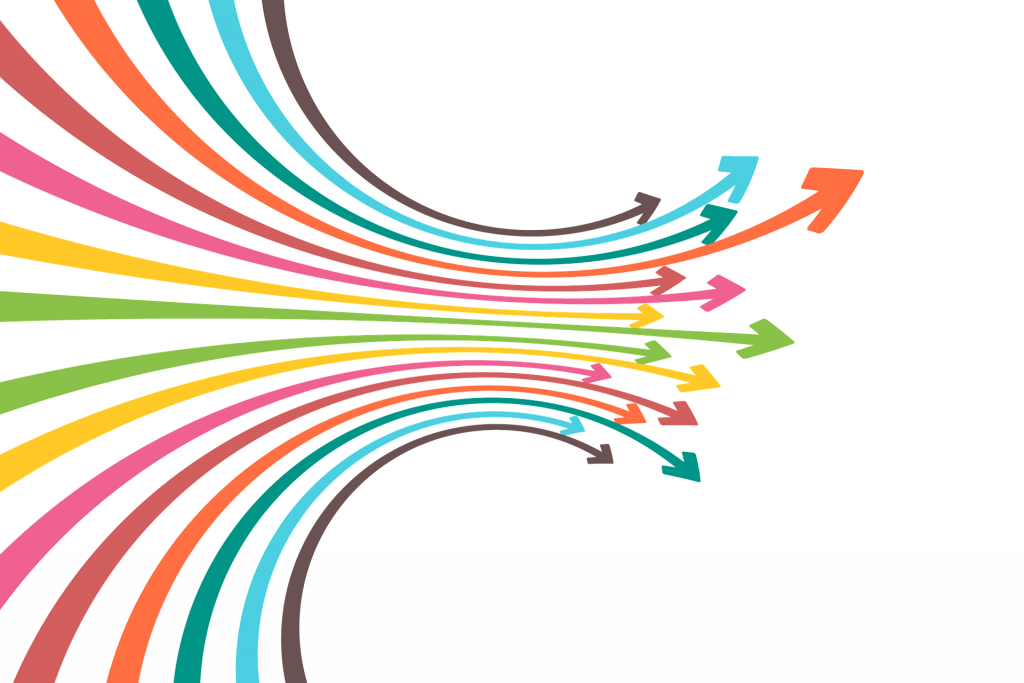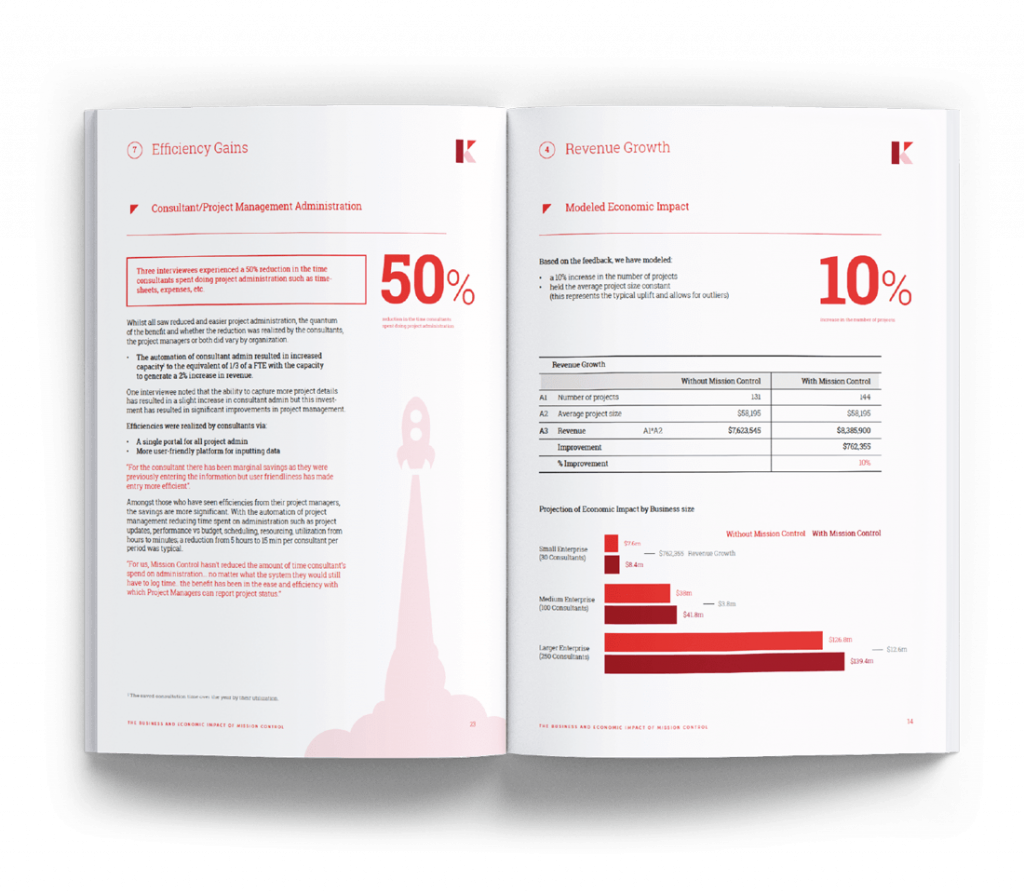The world of project management is expanding as more businesses realise its importance to enact real change and innovation. Dubbed ‘The Project Economy’ by the Project Management Institute, we are now in a time where businesses are fundamentally shifting the way they operate, where projects no longer sit adjacent to operations but are the main way problems get solved and businesses innovate.
With this in mind a number of businesses need to adjust their approach to projects and understand that workflow and solving problems can be successful through a variety of methodologies. We want to unpack these methodologies and the types of businesses they work best for.
1. Agile Project Management Methodology
What
A methodology that is based on developing an iterative and adaptive workflow, allowing for an organic evolution of the end result through a collaborative process. The work is adaptive in planning, evolutionary in development, seeking early delivery and is always open to change if that leads to improvement.
Nearly 20 years ago a group of 17 software developers created the ‘Manifesto for Agile Software Development’ which included 12 Principles for Agile. Whilst this was originally for software, the main ideas from this manifesto are still relevant in the methodology including, individuals over processes, working products over detailed documentation, customer collaboration over contract negotiation and responding to change over rigid planning.
Who
This started out as a methodology attuned to software developers and engineers who needed a more flexible way of managing projects in order to produce the best outcomes. Nowadays, this is a method adopted by numerous industries and businesses who are trying to solve complex problems where the work is based on consistent feedback, risk and innovation.
Agile methods have been adopted by industries that have a focus on innovation and where there is a level of uncertainty around the end products, such as computers, medical devices, food, clothing and more; and it’s also being used in other types of projects that need a quick and responsive production schedule, such as marketing.
How to implement
There are two main approaches to the Agile methodology that are widely used, Scrum and Kanban.
- Scrum: is a staggered approach to the management of projects which works well for small teams. There is generally an ongoing two-week cycle to the project with short daily meetings known as ‘scrum meetings’. During these sessions teams are encouraged to learn through experiences, self-organize whilst working through problems and reflect on challenges and wins to continuously improve.
- Kanban: is a visual method where workflow is managed by placing tasks on a board so team members can see the state of work at any time. Kanban helps improve inefficiencies by story-boarding through problems and identifying roadblocks visually for everyone. Almost anyone can plan with Kanban boards, adding cards to represent project phases, actions, deadlines, people, ideas and more. Kanban software makes this methodology especially accessible.
2. Waterfall Project Management Methodology
What
This is a methodology that most people would be familiar with as it is a process where each phase of the project flows onto the next. The model requires that you move from one phase to another only once that phase has been successfully completed. It is a linear project management approach, where stakeholder and customer needs are gathered at the beginning of the project, and then a sequential project plan is created to accommodate those requirements.
Who
Waterfall is great for any type of project that requires a sequential plan to success. It has traditionally been used instead of Agile for manufacturing and construction projects, which are highly structured and when it’s too expensive to pivot or change anything after the fact. However, it is a method also well-suited for organizations or teams that work well under a milestone and date focused paradigm and can still have a level of flexibility when using real-time software to manage projects.
With clear stages that everyone on the team can understand and prepare for, it is relatively simple to develop a timeline for the entire process and assign particular milestones and actions for each stage and even completion. Most would use a Gantt Chart software for this so the process and methodology can all be tracked via timings in one place.
How to implement
The project plan is usually driven within six stages with each phase completed prior to moving to the next;
- Requirements: These are always gathered at the beginning of the project, allowing every other phase to be planned without further customer involvement until the product is complete.
- Analysis: This is where all possible solutions are brainstormed and theorized and then structured into a plan ensuring everything is met and considered.
- Design: This is when the theoretical ideas and solutions are made into concrete specifications for the product.
- Development: The actual physical development of the product based on all of the above.
- Testing / verification: This phase is when the customer reviews the product to make sure that it meets the requirements laid out at the beginning of the project.
- Operation / deployment: Following any minor adjustments the product is released.
PRINCE2 is also a term that is usually associated with the Waterfall method which stands for PRojects IN Controlled Environments, which involves dividing projects into manageable and controllable stages. It’s also a globally recognised certification and qualification for project managers.
3. Lean Project Management Methodology
What
Lean is customer value centric, ensuring that through this methodology you are optimizing the people, resources, effort and energy of your organisation. It focuses on key processes to continuously improve work processes, purpose and people ensuring everything impacts positively on value.
Instead of trying to hold total control of work processes, Lean management encourages shared responsibility and shared leadership through teamwork.
Who
Lean was first developed as a great methodology for manufacturing, but it has been adopted by construction and education industries, among others in the manufacturing space and countless startups and software development firms looking to drive products focused on the end user.
It’s also been used as a methodology to support start-up businesses where the goal is to shorten product development cycles and rapidly discover if a given business concept is viable. This methodology is also employed by government structures and marketing professionals to assess various concepts.
How to implement
There are five main principles to Lean and they can all work together throughout the project not just as a structured flow:
- Identify value: The value in any project is the problem you are solving for the customer.
- Value stream mapping: Mapping out the workflow of the company including all the actions and people involved in the project to identify any parts of the process that don’t add value.
- Create continuous workflow: Ensuring the workflow for each team remains smooth by breaking down into smaller batches to easily detect and resolve roadblocks.
- Create a pull system: Make sure work is only developed if there is a demand for it.
- Continuous improvement: Engage everyone in the process of continuous improvement, ensuring that regular communication and identification of possible obstacles ahead of time. Software that includes internal communication and issues flagging capability is useful here.
4. PMI/ PMBOK Project Management Methodology
What
The Project Management Institute (PMI) is a not-for-profit membership association, certification and standards organization. PMBOK® is an acronym for Project Management Body of Knowledge, a book published by PMI, that collects the processes, best practices, terminologies and guidelines for the industry.
The methodology breaks down a project into five process groups: initiating, planning, executing, controlling and closing.
Who
Almost any project in any industry can benefit from PMBOK, as all projects big and small can go through the various stages and it’s a great way to keep everyone on the same page and offers a clear definition of how a project is managed.
It creates a standardized method to keep working methods consistent across different companies. It is also the basis for PMP certification, which is the gold-standard among project managers, and recognized all over the world.
How to implement
The method has five stages of management:
- Conception and initiation: High level project goals and definition are developed
- Definition and planning: A roadmap is created to help guide teams towards specific targets throughout the project.
- Launch or execution: When deliverables are developed and completed, using a capable and adaptive PM software tool.
- Performance and control: This phase is measuring project progression and performance to ensure all tasks align with the project plan.
- Project close: Completion of the project.
5. Critical Path (CPM) Project Management Methodology
What
In CPM, an entire workflow of the project is created, including all the milestones and actions, the duration of those tasks, what task dependencies there are and points in which deliverables are due. With this information, a path is determined to finish the project with the least challenges and foreseeing the roadblocks in advance.
Who
This method works best with smaller or mid-sized projects, so usually reserved for smaller consultancies, finance and creative industries. The larger the project, the more difficult it can be to take all the data you need to diagram and make sense of it. However, with a good project management software and a detailed Gantt Chart, this method can be utilised for larger scale projects in manufacturing and construction industry.
How to implement
The technique starts with a list of all activities, or a work breakdown structure, the duration of each task, what dependencies there are and then mapping milestones and deliverables.
- Define the project scope via tasks, dependencies and timeframes
- Critical path analysis and identification through the sequence of tasks and utilising software.
- Different project paths may be present and can run concurrently with each other.
As a business it can be challenging to decide which method to adopt, however it’s best to have a solution that will let you work with multiple methodologies. Not every project is the same and not every organisation is the same, so by having quality project management software that can support you in whichever methodology you choose allows for flexibility and diversity even within a company.
Mission Control is a comprehensive Salesforce Project Management software application. Make sure you check out our other Project Management Best Practices.





